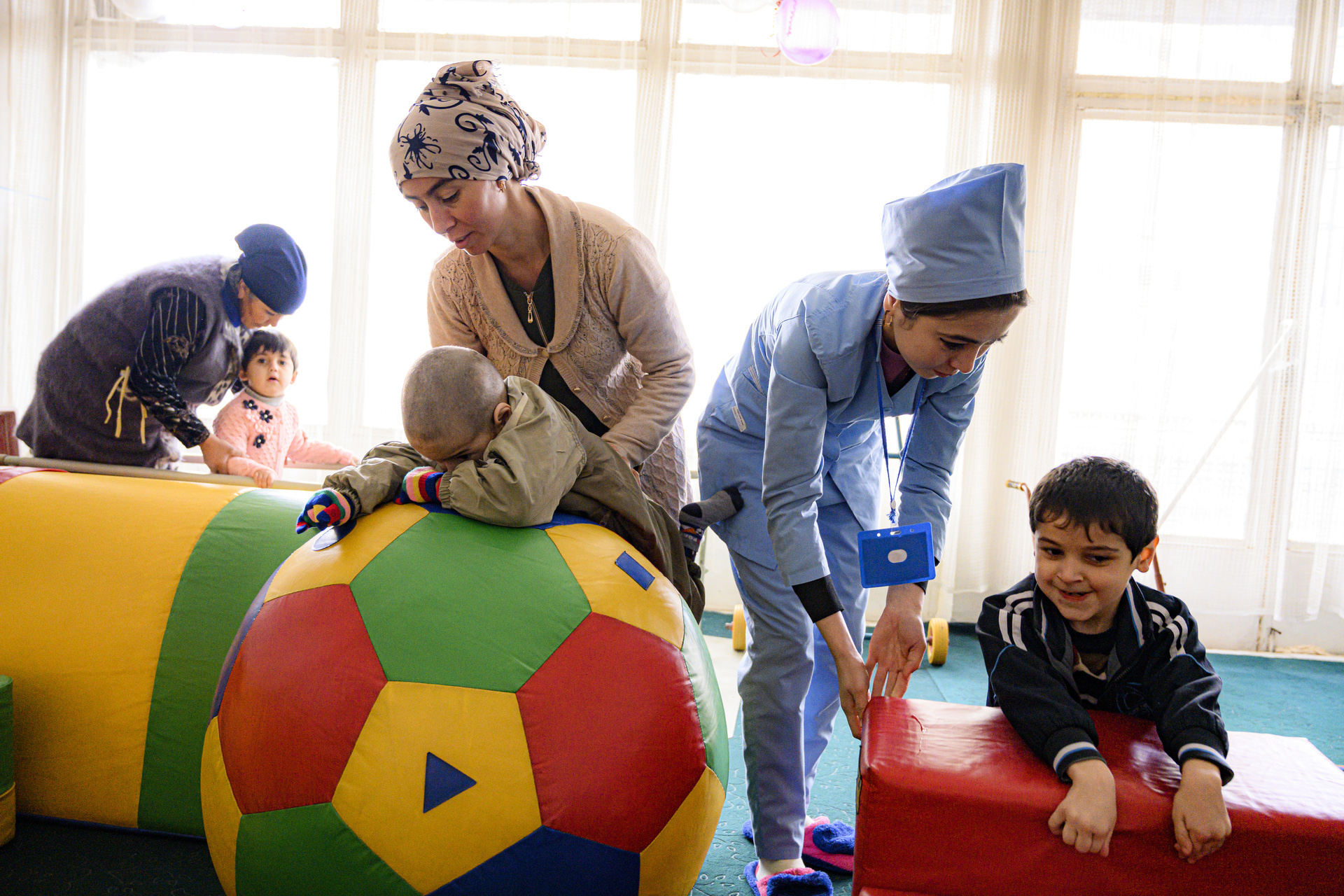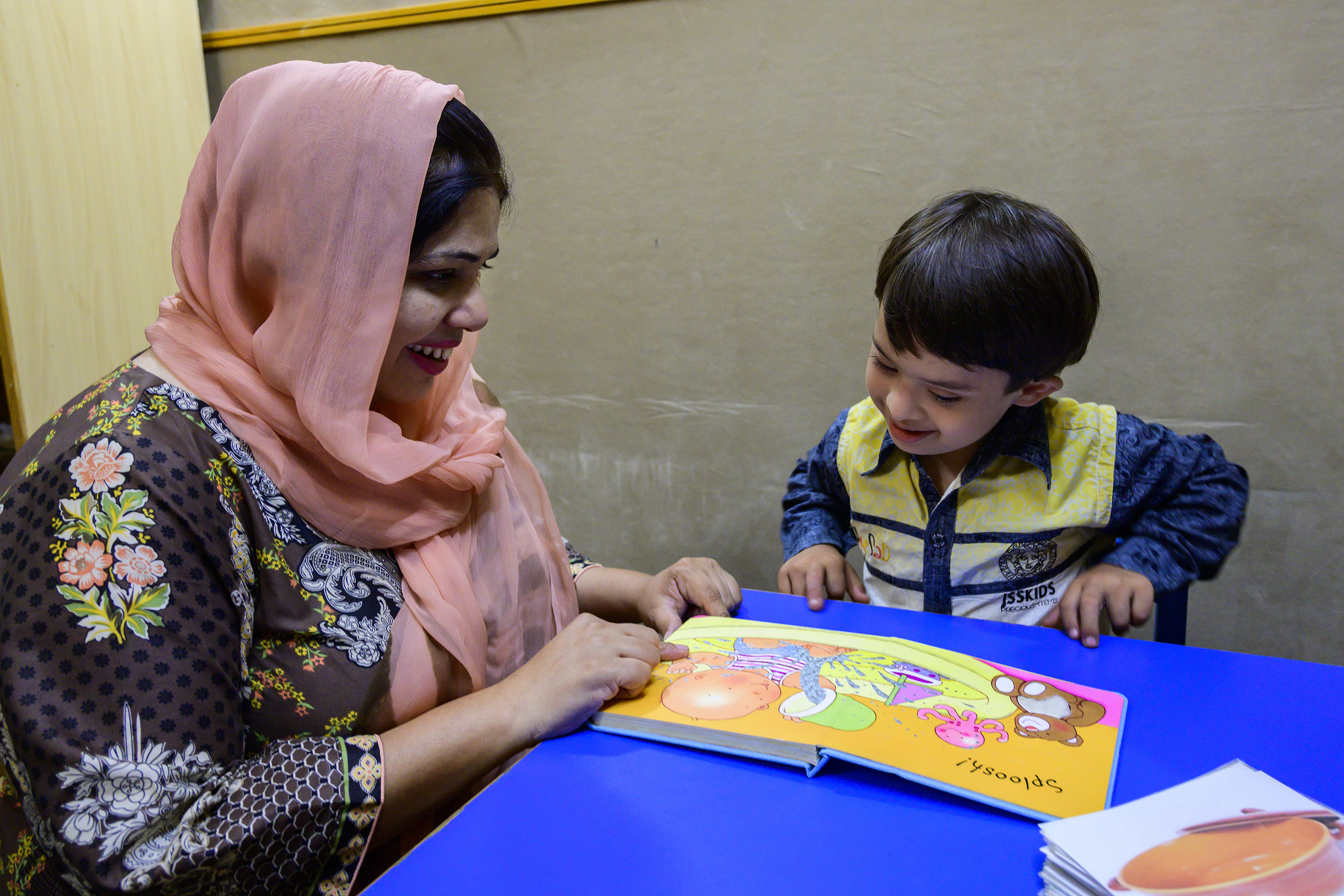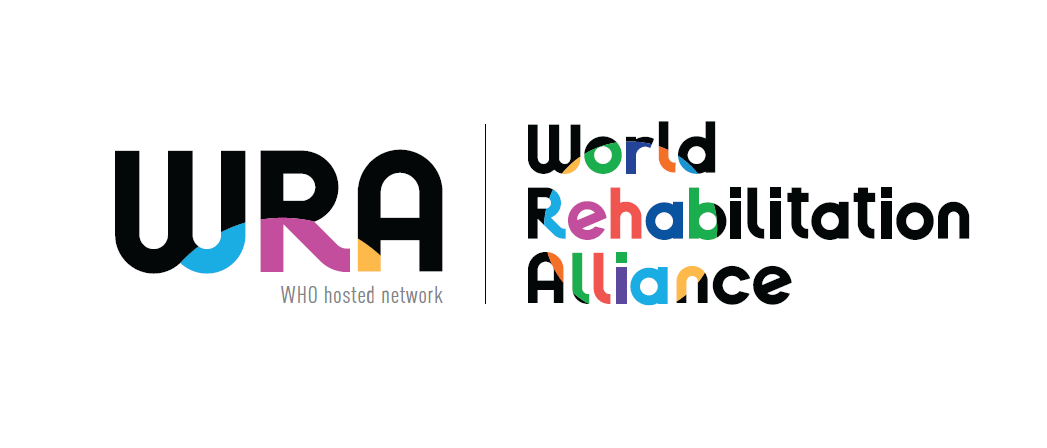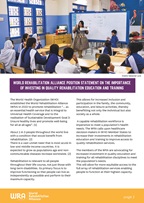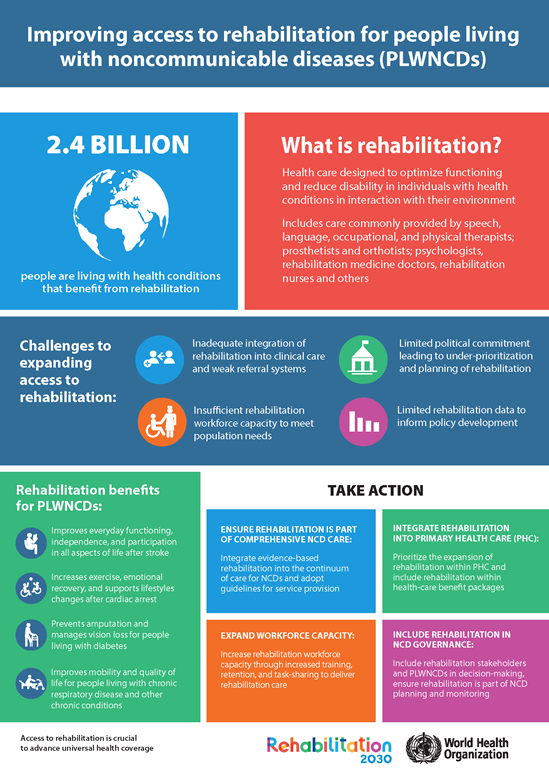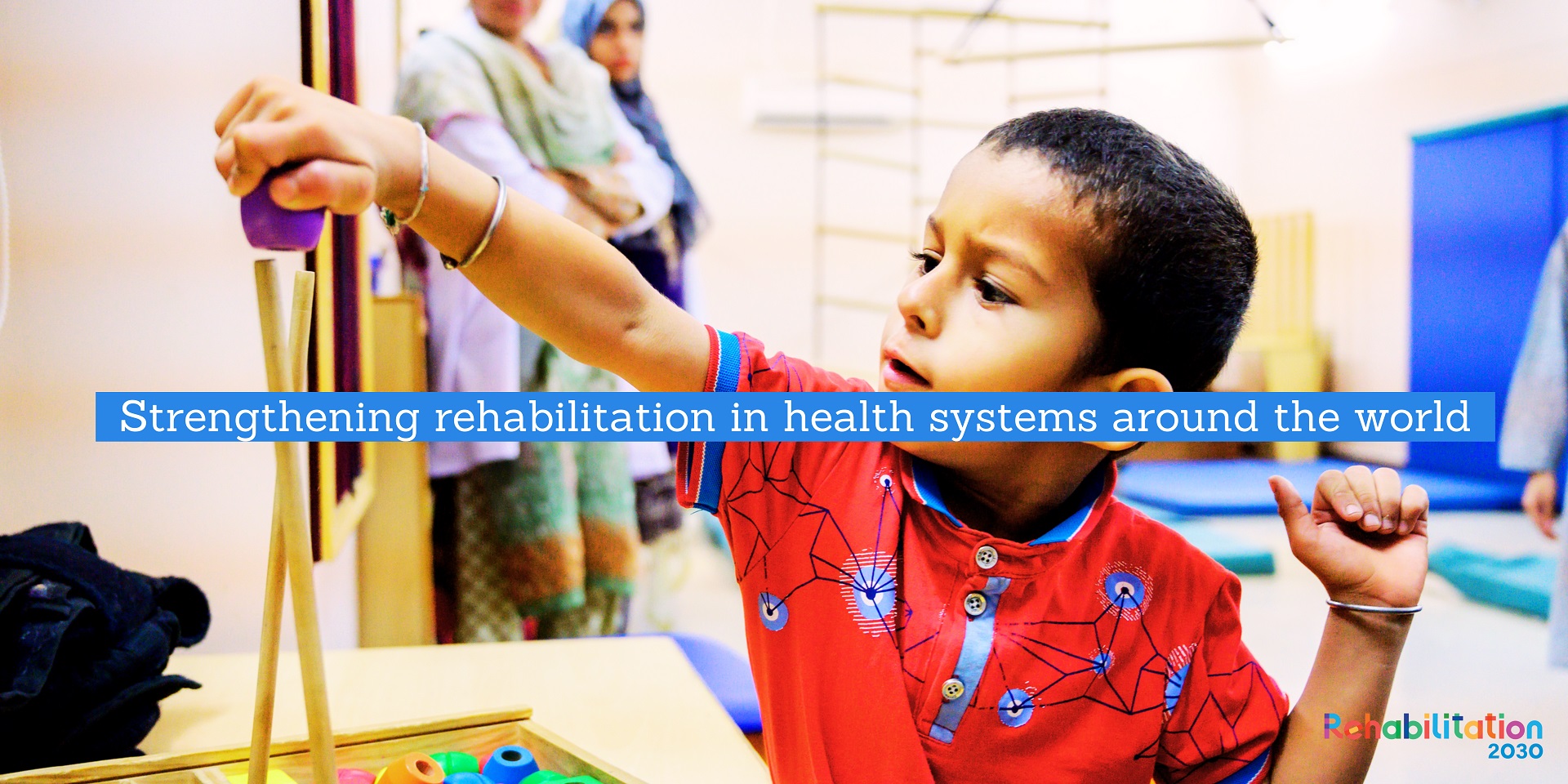
Rehabilitation programme
Rehabilitation addresses the impact of a health condition on a person’s everyday life, by optimizing their functioning and reducing the experience of disability. Expanding the focus of health beyond preventative and curative care, rehabilitation ensures people with a health condition can remain as independent as possible and participate in education, work and meaningful life roles.
Globally, 1 in 3 people today are estimated to be living with a health condition that would benefit from rehabilitation. Global demographic and health trends, such as population ageing and a rising prevalence of noncommunicable diseases, as well as continued consequences of conflict, injury and developmental conditions are placing increasing demands on the health system. The need for quality rehabilitation services is rapidly growing, yet in many parts of the world this need is largely unmet.
WHO is committed to ensuring that rehabilitation is an integral part of the health system and universal health coverage, and to strengthening the rehabilitation sector so that all people with rehabilitation needs have timely access to these services.
These efforts are guided by the World Health Assembly resolution WHA76.6 and the Rehabilitation 2030 initiative and are supported by the work of the World Rehabilitation Alliance.
The Rehabilitation programme also partners with 15 non-State actors in official relations with WHO and 9 WHO collaborating centres.
Highlights
Our initiatives
Our work
Publications
All →Using the package of interventions for rehabilitation in Georgia
Rehabilitation indicator menu: a tool accompanying the Framework for Rehabilitation Monitoring and Evaluation...
This document contains the second edition of the WHO Rehabilitation Indicator Menu (RIM), which is a tool accompanying the Framework for Rehabilitation...
Strengthening rehabilitation in health emergency preparedness, readiness, response and resilience: policy...
Strengthening rehabilitation in health emergency preparedness, response, and resilience: policy brief outlines the evidence for rehabilitation in emergencies...
The Guide for rehabilitation workforce evaluation: project officer handbook provides the step-by-step guidance for implementing the evaluation in a country....
Guide for rehabilitation workforce evaluation
The Guide for rehabilitation workforce evaluation (GROWE) comprises a suite of resources that can be applied in countries to provide information to support...
Guidance on the analysis and use of routine health information systems: rehabilitation module
Data collection for rehabilitation through routine health facility reporting is required to underpin rehabilitation decision-making in health policy, management...
Improving the health and wellbeing of people living with neglected tropical diseases through rehabilitation...
The purpose of this publication is to highlight the unmet need for rehabilitation and assistive technology for persons living with neglected tropical diseases,...
A guidance document for medical teams responding to health emergencies in armed conflicts and other insecure...
This publication, also referred to as the “Red Book”, offers a guidance framework and introduces additional verification requirements for...
Using a contextualized competency framework to develop rehabilitation programmes and their curricula
This guide complements both the WHO Rehabilitation Competency Framework and the guide, Adapting the WHO Rehabilitation Competency Framework to a specific...
The WHO Rehabilitation Competency Framework was designed to be “adapted and adopted” to create context-specific rehabilitation competency frameworks,...
Documents
All →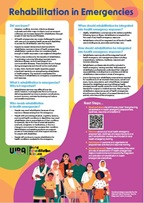
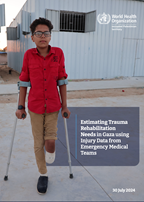
Estimating Trauma Rehabilitation Needs in Gaza using Injury Data from Emergency Medical Teams
This technical note provides evidence-based insights on the number and distribution of conflict-related injuries by type in Gaza since October 2023. This...
Videos
All →Infographics
All →Feature stories
All →Photo story
Fact sheet
Related health topics
Join our mailing list to receive regular updates
Contact us

